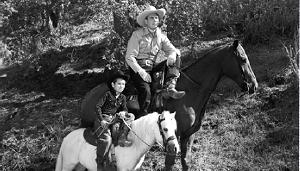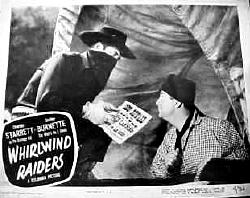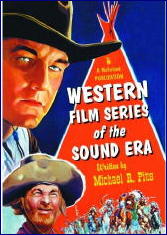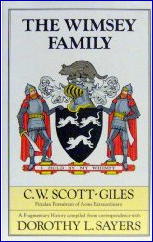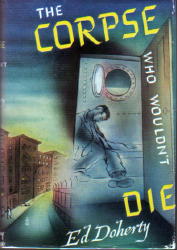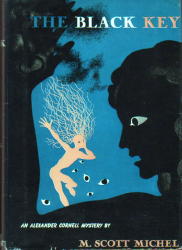Tue 27 Apr 2010
Reviewed by Mike Tooney: AGATHA CHRISTIE – And Then There Were None.
Posted by Steve under Reference works / Biographies , Reviews[4] Comments
AGATHA CHRISTIE – And Then There Were None. Washington Square Press (Pocket Books), hardcover, July 1973; 173 pages. ISBN 0-671-70466-4.
If you haunt used book stores (ever dwindling numerically) like I do, you occasionally come across something unexpected. Such was the case with this particular edition of an Agatha Christie novel:
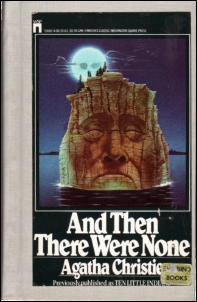
This is a hardcover version of the mass-market paperback (and there is no mention anywhere in this edition of the book’s original, politically incorrect title).
What makes this version special is the 48-page “Reader’s Supplement” inserted in the middle of the text. Clearly, the supplement is aimed at students, probably in high school.
The supplement breaks down as follows:
1. Portrait photo of Agatha Christie (1 page)
2. “Biographical Background” (3 pages)
3. “Historical Background” (2 pages)
4. “Pictorial Background” (22 pages)
5. “Visual Glossary” (2 pages)
6. “Literary Allusions and Notes” (5 pages)
7. “Critical Excerpts” (13 pages).
“Pictorial Background” (all photos are B&W and grainy):
“A View of the Terraces at Torquay” – “Agatha Christie with Her Husband at Their Devonshire Home” – “A Third-class Coach on an English Train” (sketch) – “A Striking View of the Plymouth Shoreline” – “The Devonshire Countryside” – “An English Village Similar to Sticklehaven” – “A Flashy Sports Car of the Period” – “The Occupants of the Motor Boat to Indian Island” (scene from the 1945 movie) – “A ‘Correct’ English Butler” (sketch) – “Harley Street, London, Where Numerous Doctors Practice” – “The Guests Enjoy Their First Dinner” (1945 movie) – “A Gramophone—1905” (sketch) – “A British Courtroom Scene” – “Some of the Guests on the Terrace” (1945 movie) – “A Rocky Coast in Devonshire” – “Vera and General MacArthur at the Shore” (1945 movie) – “A Tea Tray and Service” – “Another Shocking Warning” (1945 movie) – “The Latest Victim” (1945 movie) – “The Last Two Survivors in a Showdown” (1945 movie) – “… And Then There Were None ….” (1945 movie) – “Scotland Yard, Viewed from Westminster Bridge—1940s”.
“Visual Glossary” (artist’s sketches):
Cosh, truncheon, stiletto, torch, grandfather chair, siphon, gimlet, heliograph.
“Literary Allusions and Notes”:
Thirty-seven entries including “cairngorm,” “trional,” “pukka sahib,” “red herring,” “chloral,” “Caesar’s wife,” and “had one over the eight.”
“Critical Excerpts” (published comments from critics of various eras about mystery fiction, including a few about this particular book — and how many of these people have you heard of?):
R. Austin Freeman (1924) – Willard Huntington Wright (1927) – Dorothy L. Sayers (1928) – George Godwin (1929) – P. G. Wodehouse (1929) – Ronald A. Knox (1929) – H. Douglas Thomson (1931) – Stephen Leacock (1939) – Times Literary Supplement (1939) – The Spectator (1939) – Ralph Partridge (1939) – M. L. Prevost (1940) – Will Cuppy (1940) – Marian Wiggin (1940) – Saturday Review of Literature (1940) – Isaac Anderson (1940) – The New Yorker (1940) – The Pocket Book of Great Detectives (1941) – Edmund Crispin (1961) – Fredric Wertham, M. D. (1926) – Current Biography (1964) – Harry Shefter (1964) – Colin Wilson (1969).
The characteristically arch Wodehouse excerpt comes from his article “About These Mystery Stories” in the Saturday Evening Post (1929):
“If I were writing a mystery story I would go boldly out for the big sensation. I would not have the crime committed by anybody in the book at all …”
The next time you’re in a used book store, you might want to look for this edition of And Then There Were None, but you might have to search the children’s section to find it.
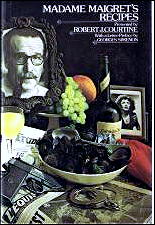
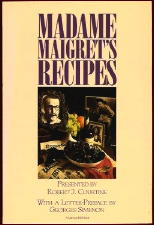




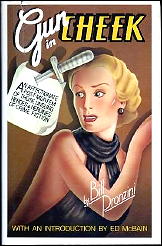
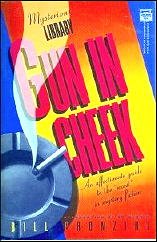





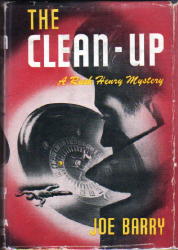
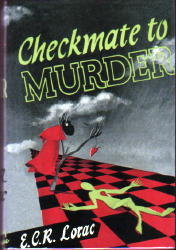
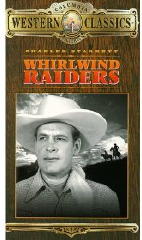 WHIRLWIND RAIDERS. Columbia, 1948. Charles Starrett, Smiley Burnette, Fred Sears, Philip Morris, Jack Ingram, Nancy Saunders, Patrick Hurst, Don Kay Reynolds (as Little Brown Jug), Doye O’Dell and The Radio Rangers. Screenplay: Norman Hall. Director: Vernon Keays.
WHIRLWIND RAIDERS. Columbia, 1948. Charles Starrett, Smiley Burnette, Fred Sears, Philip Morris, Jack Ingram, Nancy Saunders, Patrick Hurst, Don Kay Reynolds (as Little Brown Jug), Doye O’Dell and The Radio Rangers. Screenplay: Norman Hall. Director: Vernon Keays.